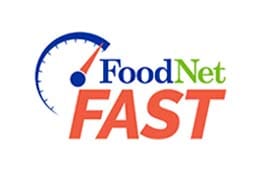Foodborne Illness and Culture-Independent Diagnostic Tests
What You Need to Know
- CIDTs are lab tests that can detect pathogens in patient samples.
- CIDTs can be faster, easier, and cheaper to use than traditional laboratory-based culture tests.
- Unlike culture tests, CIDTs do not provide some information used for patient care and public health practice.
Culture-independent diagnostic tests (CIDTs) have changed the way that laboratory tests identify pathogens, such as bacteria, viruses, and parasites. CIDTs work by detecting the presence of a gene or antigen associated with a specific pathogen.
CIDTs can be conducted more rapidly and yield results far sooner than traditional culture-based methods. However, CIDTs usually do not provide important information such as whether the pathogen is a particularly harmful strain, how it will respond to antimicrobial agents, or if it recently has been found in others who are sick, suggesting an outbreak might be occurring.
Pros and cons of using CIDTs to diagnose possible foodborne infections
CIDTs are faster, easier, and cheaper ways to detect pathogens than culture. Many CIDTs are more sensitive than culture, so CIDTs can increase the likelihood of identifying the pathogen causing illness. Some CIDTs can detect more than one pathogen in the same patient sample.
However, CIDTs do not provide an isolate of the pathogen. Isolates are needed to conduct whole genome sequencing, the results of which serve as a pathogen’s unique “DNA fingerprint.” Public health officials use DNA fingerprints to monitor trends in infections, detect outbreaks, and link illnesses to likely sources. WGS data is also used to identify pathogen characteristics, such as serotype, virulence, and antimicrobial resistance.
CIDTs are changing public health surveillance
Because CIDTs do not provide isolates, we can’t perform tests that determine a pathogen’s DNA fingerprint, strain or subtype, antimicrobial resistance pattern, or other attributes – meaning healthcare professionals can’t tailor patient therapy and we can’t make informed public health decisions.
When links among cases of illness cannot be made quickly, the investigation of the source of the infections is delayed. Contaminated products may remain on shelves and in pantries, outbreaks may go unsolved, more people may become sick, and valuable opportunities for improving food safety may be lost.
Increasing use of CIDTs affects interpretation of public health surveillance data and our ability to monitor progress toward achieving prevention goals. It is difficult to interpret whether reported changes in incidence are real or whether they are in part or completely due to changes in diagnostic testing practices.
Learn more about the effects of CIDTs on public health surveillance.
What is needed
To maintain public health surveillance of foodborne and other bacterial enteric diseases and to preserve the quality of healthcare decision-making, measures must be taken to
- Enhance surveillance methods to capture information on the type and brand of CIDTs that clinical labs are using, so investigators can examine the lab results critically
- Encourage and implement reflex culturing (culturing after a positive CIDT result) at clinical laboratories or submission of culture-ready specimens to public health laboratories
- Develop culture-independent methods to identify characteristics of pathogens
How CDC is responding
CDC’s FoodNet program is
- Routinely surveying clinical laboratories about the adoption of new testing methods to detect enteric intestinal pathogens
- Collecting epidemiological and pertinent laboratory data on reports of culture-confirmed and CIDT-positive bacterial infections
FoodNet, the Foodborne Diseases Active Surveillance Network, is a collaboration among CDC, FDA, USDA, and 10 states. FoodNet conducts surveillance for Campylobacter, Cyclospora, Listeria, Salmonella, Shiga toxin-producing Escherichia coli (STEC) O157 and non-O157, Shigella, Vibrio, and Yersinia infections diagnosed by laboratory testing of samples from patients.
CDC’s PulseNet program is
- Meeting with companies that make CIDTs to encourage the development of tests that meet public health needs
- Developing DNA fingerprinting techniques that do not depend on having an isolate
- Working to develop targeted tests to identify and subtype pathogens without the need to perform culture
PulseNet, the national molecular subtyping network for foodborne disease surveillance, is a laboratory network that compares the DNA fingerprints of bacteria from patients to find clusters of illness that represent unrecognized outbreaks.
Related publications
The following publications from CDC’s Foodborne Diseases Active Surveillance Network (FoodNet) illustrate the increased availability and use of CIDTs among clinical laboratories in the FoodNet surveillance area.
- Changing diagnostic testing practices for foodborne pathogens, Foodborne Diseases Active Surveillance Network, 2012–2019
- Preliminary incidence and trends of infections with pathogens transmitted commonly through food — Foodborne Diseases Active Surveillance Network, 10 U.S. Sites, 2006–2017
- Bacterial enteric infections detected by culture-independent diagnostic tests — FoodNet, United States, 2012–2014
